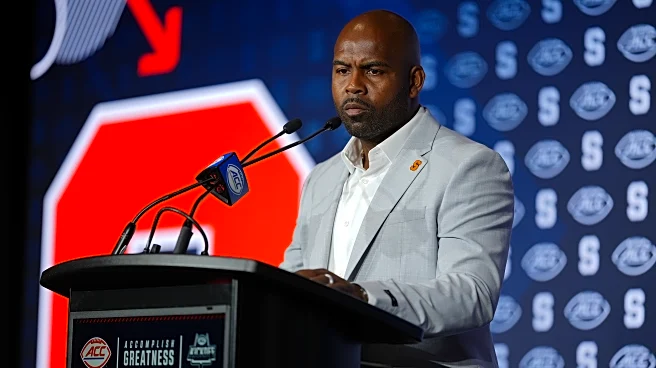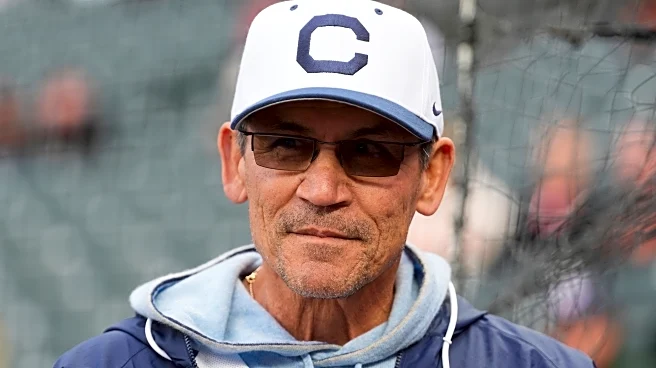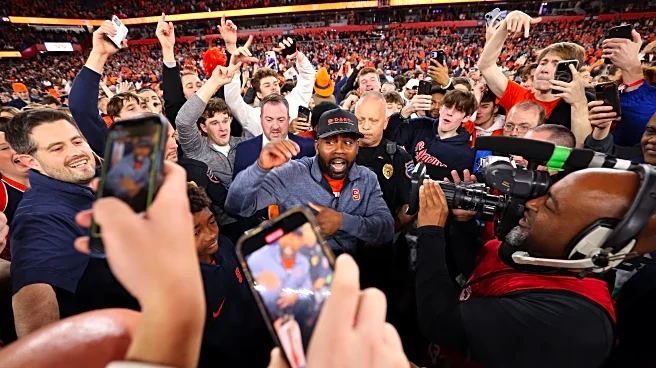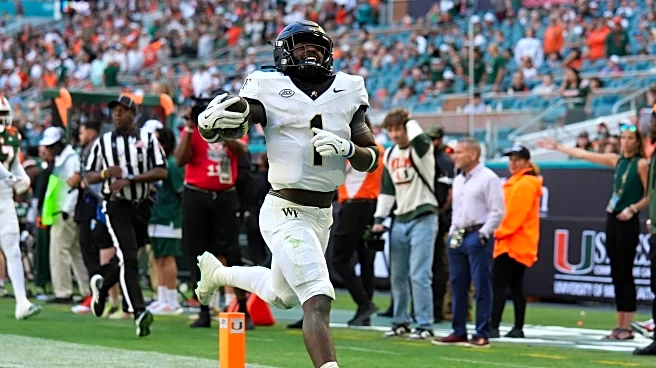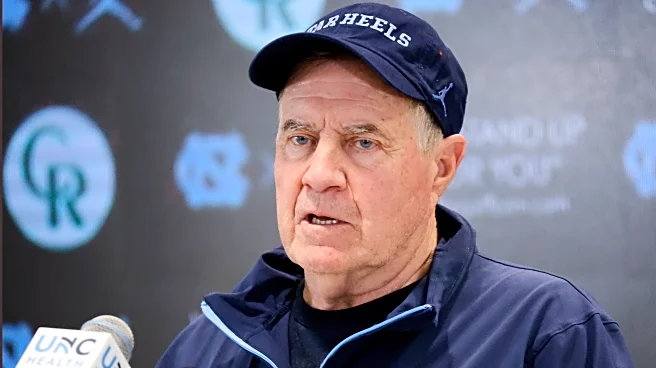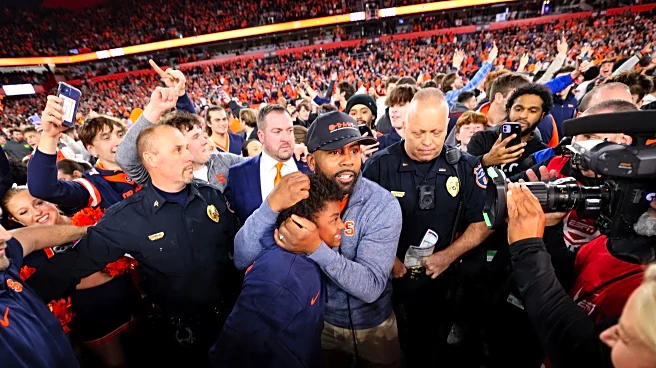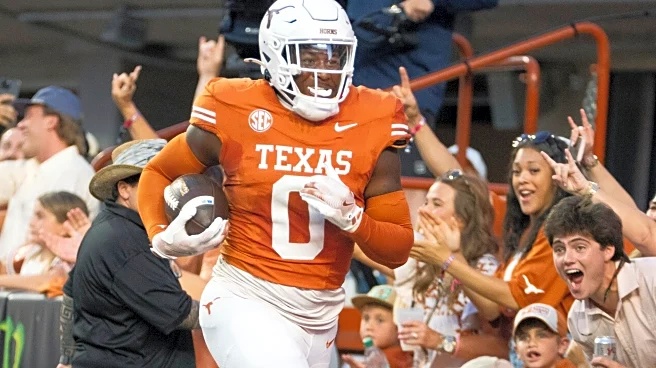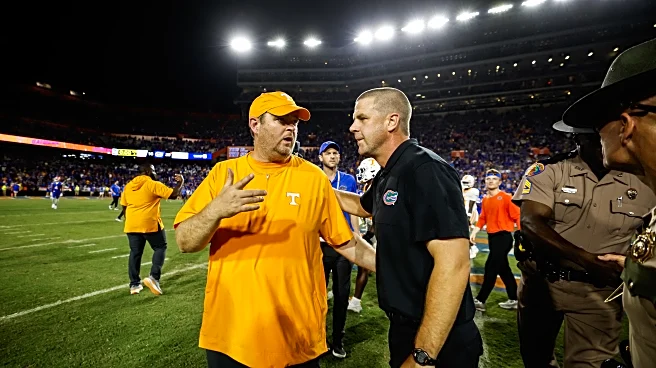
In the third and final part of our preseason football ACC power rankings series, we look at the bottom feeders, ranked 11 through 17. Of Virginia’s eight conference games, five come against this group, and three of those five are at Scott Stadium.
11. Virginia Tech:
The Hokies were the trendy, dark-horse pick to win the league last season, but failed to meet expectations with an eventual 6-7 finish. This year, those expectations — or lack thereof — are back to reasonable levels.
Kyron Drones returns after an injury plagued
’24 and looks to live up to the preseason hype placed upon him a year ago. The Hokies struggled in the trenches offensively, prompting Brent Pry to make a coaching change — bringing in Matt Moore from West Virginia. Shortly after, Moore helped spearhead the additions of four Mountaineer lineman, an interesting dynamic that could bring some continuity at a few spots in hopes to avoid any extra wear and tear on Drones.
Who Drones can rely on at wideout is somewhat of an unknown after losing four of the five top pass catchers. The offense will need to lean heavily on returner Ayden Greene and Wake Forest transfer Donavan Greene, as well as Benji Gosnell at tight end.
In addition to the graduations of playmakers Bhayshul Tuten and Antwaun Powell-Ryland, the Hokies lost a number of key guys to the portal in the offseason with a handful finding landing spots in the SEC. Losing players that figured to be building blocks for the upcoming season and beyond to the portal doesn’t necessarily scream progress, but to Tech’s credit, they continue to find a way to a bowl game no matter what. Whether the internal expectations to do better than that are realistic or not for the Hokies in the current NIL era, another six win season in Pry’s fourth campaign could make for an interesting offseason in Blacksburg.
12. North Carolina:
How great it is to finally get to the football-playing part of what has been the Bill Belichick experience thus far. The Tar Heels cleaned house, bringing in a total of 70 new players to Chapel Hill. A daunting challenge for any incoming coach, but can Bill Belichick work the same magic at the college level as he did for years in the NFL? If there is anyone who can elevate the talent level of a group with little to no on-field chemistry, it’s probably Belichick.
The ‘Heels must replace a historically stout running back in Omarion Hampton and have yet to name a starting quarterback with Gio Lopez and Max Johnson battling for the job. Lopez transferred over from South Alabama while Johnson won the starting job a season ago, but suffered a leg injury in the opener that sidelined him for the season. Defensively, the Tar Heels are chasing consistency after a year where despite owning a top-10 pass rush, they still allowed just under 30 points per game largely due to disappearing acts against Boston College, Georgia Tech, and JMU. The combined efforts of Bill and Steve Belichick, as well as the returning production in the secondary are reasons to think that average improves.
13. Boston College:
After dueling with returner Grayson James, Alabama-transfer Dylan Lonergan has officially been named the starting QB for the Eagles. Bill O’Brien’s efforts at Alabama proved huge to get Lonergan to Tuscaloosa as a four-star prep recruit out of Georgia, and later helped move the needle to bring the quarterback up north to BC. At 6-foot-2, 211 pounds, he is a bigger body that can get the ball downfield rather effortlessly and with O’Brien’s wisdom, could blossom into a top passer in the league in the coming years.
What makes this BC so intriguing in addition to landing such a highly-rated QB is the returning experience. The Eagles return five starters on offense, headlined by Lewis Bond at receiver, and seven on defense where the secondary looks nearly identical after a great 2024. Max Tucker and Carter Davis back after multiple-interception seasons, as well as KP Price. Largely due to the work of all three, BC allowed the fewest touchdowns of any team in the league last year and after supplementing an experienced secondary with additional transfer, is primed to continue that success.
The Eagles are a sleeper to perform better than expected if the learning curve is short for Lonergan and the defense continues to stifle, but a gauntlet of a schedule won’t do them any favors.
14. Syracuse:
The Orange were one of the best stories in all of college football after eclipsing the 10-win mark, and head coach Fran Brown has continued that hot streak on the recruiting trail throughout the summer.
That said, the upcoming season may halt the hype train momentarily in year two. The transfer portal continues to be good to the program after finding a gem in Kyle McCord last year, landing two new QB’s in each of the offseason cycles. LSU transfer Rickie Collins came in and quickly earned the title of starter in the spring time, but with the surprise late-addition of Steve Angeli from Notre Dame, the competition is alive and well ahead of the opener against Tennessee. Neither of the two have proven resumes to this point, but its worth noting Angeli did well in relief throughout Notre Dame’s run when called upon, while Collins saw minimal garbage time snaps with the Tigers.
The losses of receiver Trebor Pena and offensive lineman J’Onre Reed will be tough to overcome, but there is something to be said about an ACC school bringing in less than 20 guys in the modern era of the portal. Brown will look to build from within in 2025 and continue to develop his wins on the high school recruiting trail.
15. Wake Forest:
In his first season, Jake Dickert gets one of, if not, the easiest schedule to work with out of all Power Four conference teams. However, he’ll have to deal with the typical program overhaul you would expect out of a first-year head coach. A starting quarterback has yet to be named in the battle between South Carolina transfer, Robby Ashford and DeShawn Purdie and new offensive coordinator Rob Ezell has a tall task of replacing all five of last year’s top pass catchers.
Fortunately for the Deacs’, superstar running back Demond Claiborne decided to stay loyal to Wake and the new staff in an offseason where plenty of blue-chip programs would have jumped at the chance to drop a bag and lure him away. It will be interesting to see how much they decide to force feed Claiborne, whether it be 20 to 30 carries or continuously getting the ball in his hands through the air in the transition from Dave Clawson’s signature slow-mesh to Ezell’s spread offense.
Three FCS opponents on the schedule will be helpful, but the Deacs’ could very well be underdogs in every other game they play — with games against Oregon State, Virginia Tech, and UVA all on the road as well. Year one of the rebuild could be a tough one to say the least.
16. California:
For a Power Four team to finish the previous season with six wins with a quarterback and running back set to return as upperclassmen, only to lose them in the portal is your latest example of just how tough a job coaches have at building a program back up nowadays. Fernando Mendoza and Jadyn Ott have departed for Indiana and Oklahoma, respectively, setting the table for freshman Jaron-Keawe Sagapolutele to take the reins and ignite this offense in his first season as a full-time starter.
The anointment of Sagapolutele as the starter comes as a surprise after Cal went out and got former Ohio State QB, Devin Brown in the transfer portal, who notably contended with Kyle McCord for the Buckeye starting job two years ago and backed up Will Howard in 2024 en route to OSU’s national title.
Sagapolutele was originally set to unite with Dan Lanning at Oregon before transferring to join the Golden Bears after barely stepping foot in Eugene. A former four-star prospect, the Hawaii native will have to be nothing short of spectacular to give this Cal team even a glimmer of hope at a bowl game given the loss of offensive production from a year ago.
Cal loaded up in the transfer portal 31 new additions, a class rated 38th-best per 247 Sports in an attempt to replace the losses of nearly every statistical leader on both sides of the ball. For a team that went 6-7, that is a steep hill to climb even with such a large portal class. And the losses on the defensive side are especially tough looking at the pass-rush, with 14 sacks lost between Xavier Charlton and Teddye Buchanan. It could be a long year ahead in Berkley.
17. Stanford:
Albeit in different sports, Stanford and UVA fans can relate to each other in terms of a coach deciding to step away at an inconvenient time ahead of a new season. One being a proven winner in Tony Bennett, while Troy Taylor leaves behind a Stanford program that went 6-18 under his watch. As polar opposite as two stops could be obviously, but you get the point.
Andrew Luck has since taken over as GM, hiring longtime NFL coach Frank Reich as the interim coach with the pair looking to lean on their past successes in the NFL together to improve a Stanford program that has endured four straight seasons with only three wins. Regardless if Reich heads the program for only one season or multiple, the Cardinal look to be staring at a multi-year project to nurse the program back to anything close to the resemblance of their dominance in the early 2010’s, and will begin the year in the cellar of the STL Power Rankings.
